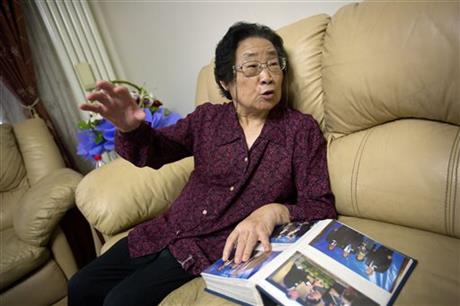
By DIDI TANG
The time could not have been more hostile for Chinese scientists. Research came to a virtual halt and intellectuals were routinely persecuted. But Tu Youyou, then a 39-year-old researcher, was summoned to join a secretive military project during the Cultural Revolution to find a cure for malaria for soldiers in North Vietnam.
“It was a task given by the government. When you are entrusted with an assignment, you do your best,” said Tu, whose husband was then serving time in a re-education labor camp for intellectuals.
Indeed, she did well. In 1971, Tu successfully extracted a substance from sweet wormwood that was an effective cure for the tropical disease and, 44 years later, received a Nobel Prize in medicine for it this week.
She is the first Chinese scientist to win a Nobel Prize in science for work done in China and the first Chinese woman to win any Nobel Prize.
The unusual circumstances aside, the isolation of the anti-malarial substance, artemisinin, like most scientific discoveries, resulted from a huge amount of trial and error, Tu recalled in an interview with The Associated Press on Wednesday.
“Before I joined the team, lots of work was done but nothing was found,” said Tu, who had been trained in both Western and traditional Chinese medicine and joined the secret group, Project 523, in 1969.
Set up in 1967 and named for the date it was created, the project aimed to find a cure for malaria in North Vietnam, which was at war with South Vietnam and the United States and was losing its soldiers to the disease. By then, some types of malaria had developed resistance to the drug chloroquine.
For two years, Tu and her team investigated hundreds of possible treatments for malaria mentioned in ancient Chinese texts. When the team moved to the sweet wormwood, they had to figure out what part of the plant and which stage of its growth might provide an active compound.
Attempts at extraction using hot water and ethanol were unsuccessful, but Tu drew inspiration from the fourth century pharmacist Ge Hong, who — in a short line of text — suggested soaking a handful of wormwood in water and then drinking the juice to treat malaria.
“It occurred to me that high temperatures could have destroyed the (anti-malaria) activity,” said Tu, who switched to using ether at lower temperatures to extract the active ingredient.
That was a crucial step in eventually identifying artemisinin, say Louis Miller and Xinzhuan Su, two researchers at the U.S. National Institutes of Health who grew curious about who should be credited with discovering artemisinin when Miller received no answer to the question at a scientific meeting in Shanghai in 2007.
The two then delved into the history of the discovery of artemisinin and concluded Tu should get the major credit.
Tu brought the plant into the project, discovered the low-temperature method for extraction, conducted the first human trial, and was involved in determining its molecular structure, Su said of their findings after reviewing files, including classified documents.
“You can see a line, very clear, of her work from the beginning to the end,” Su said.
By then, Tu had been recognized in China as a discoverer of artemisinin, but usually as part of a team.
“All honor goes to the team, and such is China,” said Tu.
She appeared light-hearted on Wednesday about having been snubbed for membership by the prestigious Chinese Academy of Sciences.
Although the Chinese public is celebrating her award, the international recognition comes as a slight to China’s science establishment, which excluded Tu from the country’s elite circle of scientists, prompting the party-run People’s Daily to question whether the process of induction into the academy is fair.
“I don’t want to talk about it anymore. I don’t want to apply anymore,” Tu said. “Let it be that I am not a member of the academy.”
___
AP science writer Malcolm Ritter in New York contributed to this report.



